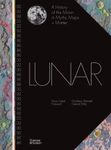About this book
Hidden from human view, accessible only to sensitive receivers attached to huge radio telescopes, giant versions of backyard satellite dishes, the invisible universe beyond our senses continues to fascinate and intrigue our imaginations. We cannot really comprehend what it means to say that a galaxy is exploding, yet that is the nature of some of the distant radio sources in the furthest reaches of space. Closer to home, in the Milky Way galaxy, radio astronomers listen patiently to the ticking of pulsars that tell of star death and states of matter of awesome densities. And between the stars, radio emission from a host of over 120 complex molecules radiate outward to reveal a tale about chemical processes that produce the very stuff of life. And all of this happens out there in the universe hidden from our eyes, even when aided by the Hubble Space Telescope.
This is the story of radio astronomy, of how radio waves are generated by stars, supernova, quasars, colliding galaxies, and by the very beginnings of the universe itself. In The Invisible Universe, you learn what astronomers are doing with those huge dishes in the New Mexico desert, in a remote valley in Puerto Rico, in the green Pocahontas Valley in West Virginia, as well as dozens of other remote sites around the world. With each of these observatories, the scientists collect and analyze their data, "listening" to the radio signals from space, in order to learn what is out there, and perhaps even if someone else may be listening as well.
From the reviews of the first edition -
"All in all, it's a grand and glorious story and Verschuur tells it with panache. The illustrations are superb, up to date, well done, and most of them are unfamiliar . . . Radio photos of Cygnus A and Cassiopeia A are wonderful . . . the book is strong in stressing the human aspects of astronomy . . . a good summary of what the radio universe contains and an interesting perspective on our understanding of it.""
Astronomy
"Every college and public library, and many high school libraries, should acquire a copy of this one-of-a-kind work by a radio astronomer who has shaped the field."
21st Century
" . . . a thoroughly up-to-date account of the radio sky . . . lavishly illustrated with dramatic images . . . very complete and readable."
Sky and Telescope
"Verschuur's contribution will [also] be enjoyed by his scientific colleagues; we can also commend it to the the Councils of our funding agencies and to those who regulate the use of the radio spectrum." Journal of the British Astronomical Association
"This is a most fascinating book . . . a book where the text is a pleasure to read and the illustrations . . . of the highest quality."
Space Science Reviews
Contents
Preface.- The Adventure of Radio Astronomy.- Radio Astronomy Comes of Age.- The Radio Sun and Planets.- The Milky Way Radio Beacon.- The Galactic Center.- The Galactic Radio Nebulae.- Interstellar Hydrogen.- Interstellar Molecules.- Pulsars.- The Galactic Superstars.- Radio Galaxies.- Quasars.- Cosmic Jets, Black Holes, and Cannibalism.- Radio Galaxies and Quasars: An Over View.- Beyond the Quasars - Radio Cosmology.- On the Search for Extraterrestrial Intelligence.- GIANT Radio Telescopes.- The Future.- Appendices.- Further Reading .- Index.
Customer Reviews
Biography
Author of seven books, co-author or editor of 3 text books in radio astronomy and astronomy in general, has written over 80 scientific research articles, and 90 + popular astronomy articles. He lectures widely on astronomical topics, pioneered the study of the interstellar magnetic field and active in radio astronomical studies of interstellar matter for over 40 years. Published the first ever, full-length, technical paper on the radio search for extraterrestrial intelligence in 1973. Has taught in the physics departments of some half-a-dozen universities, world-wide. He is the holder of a dozen patents.
































